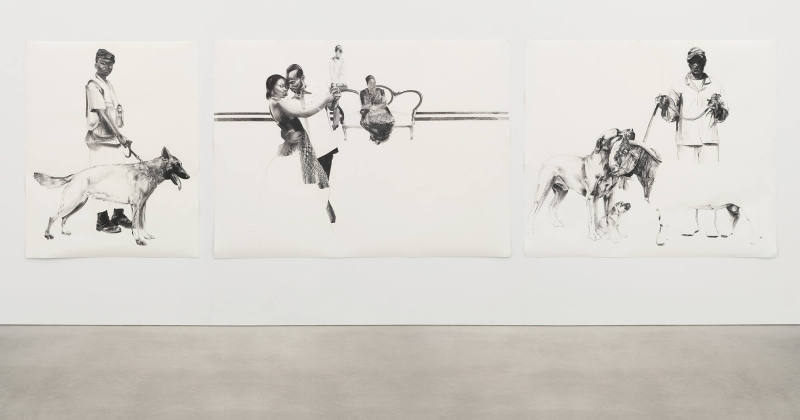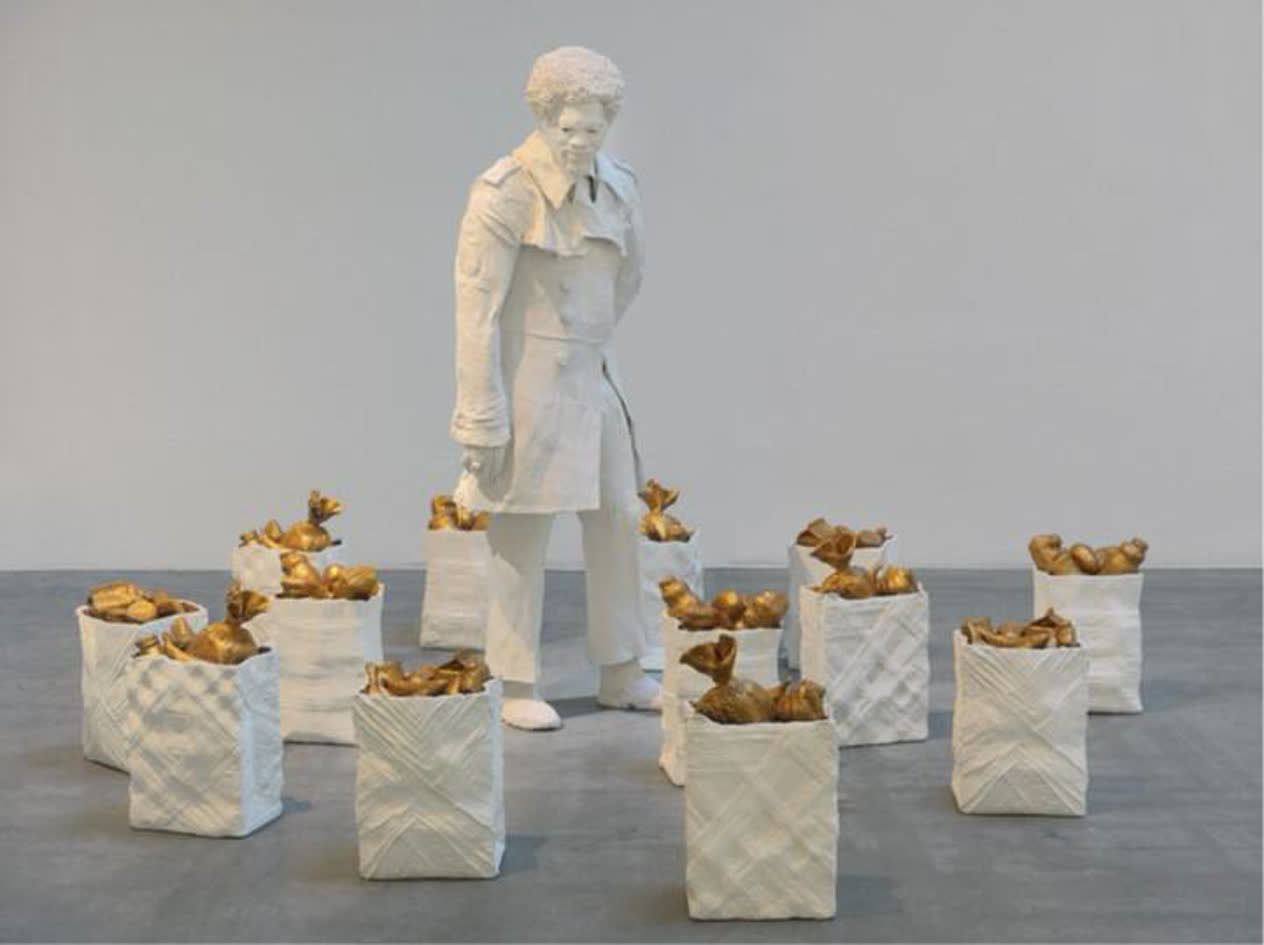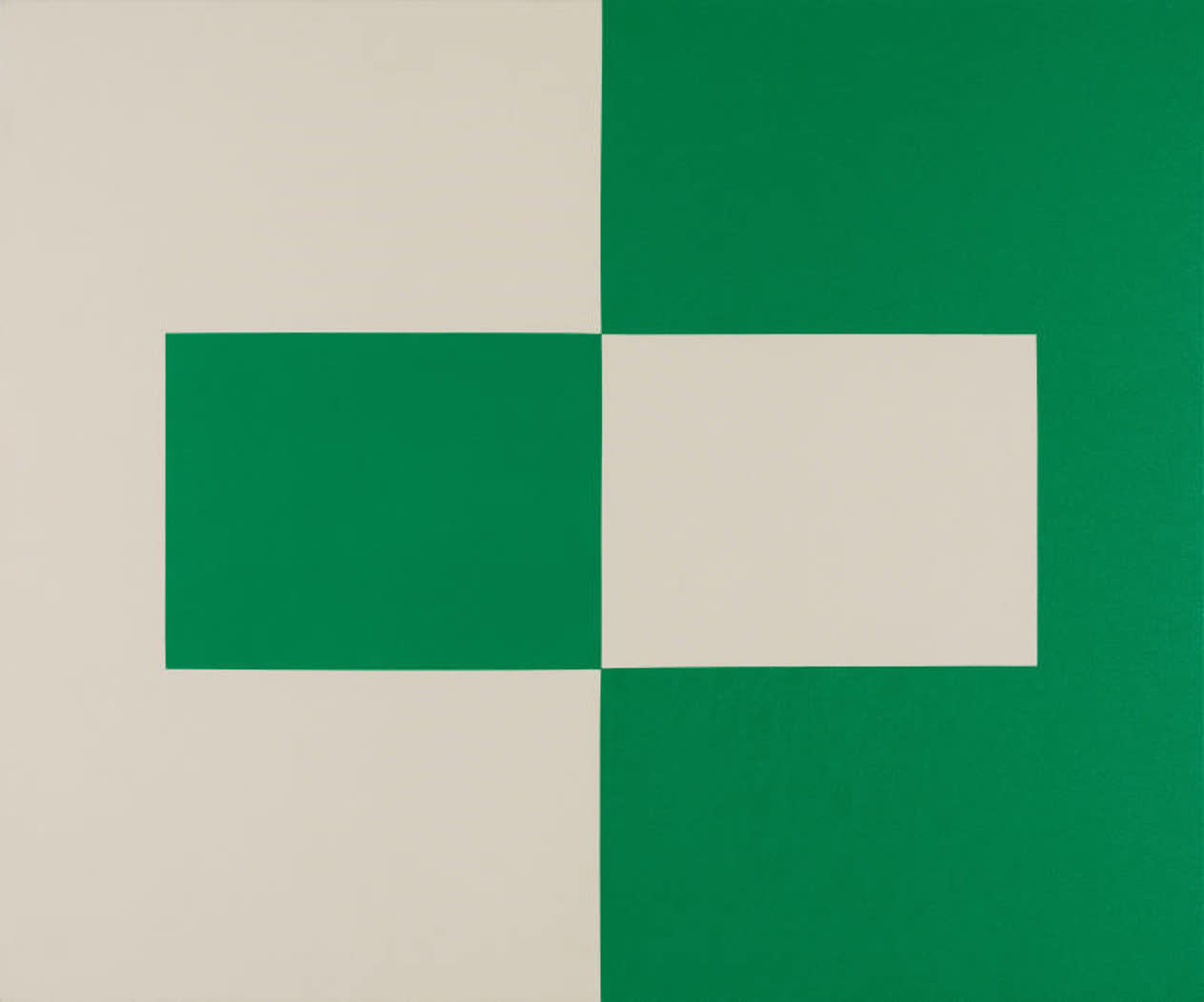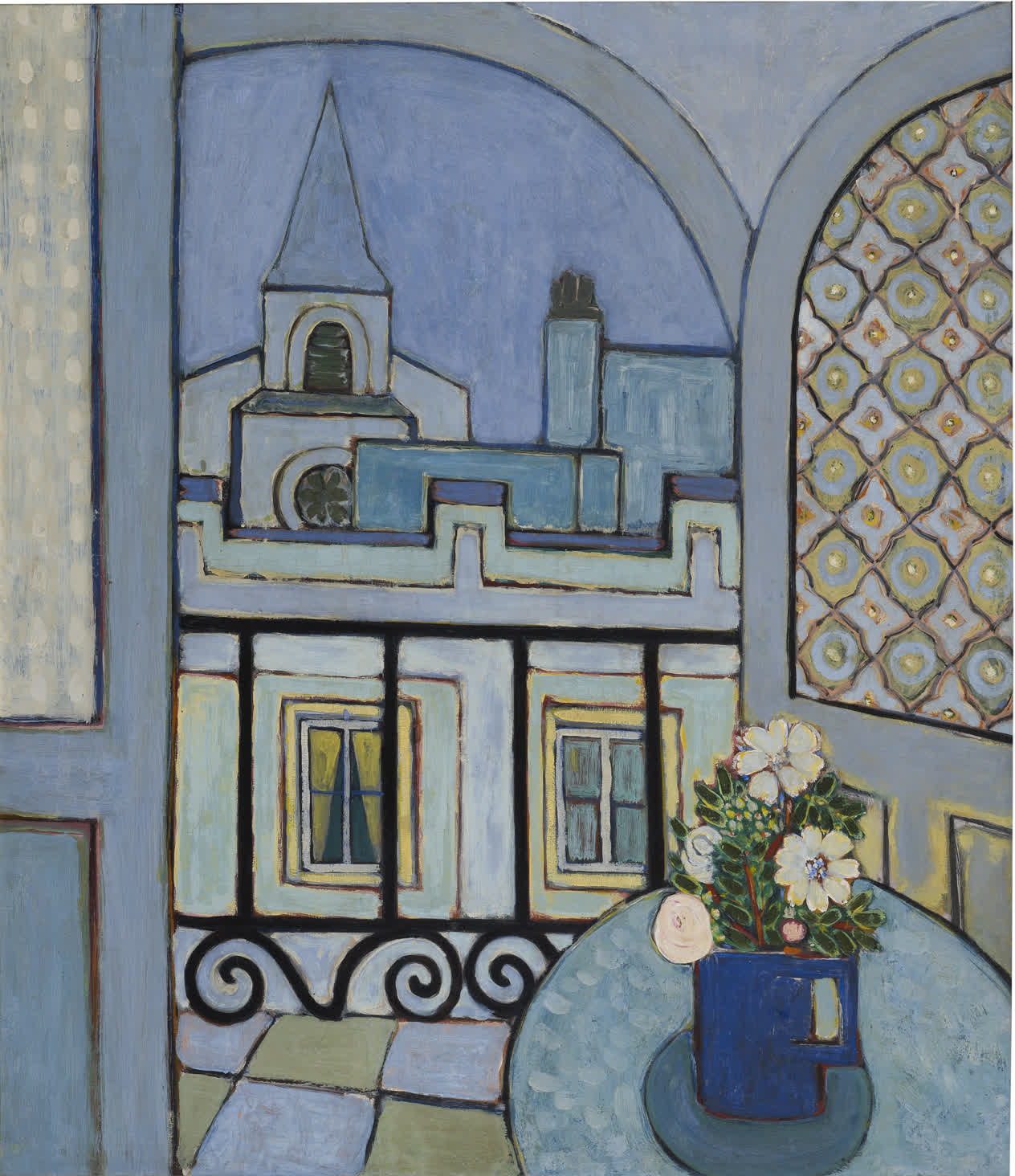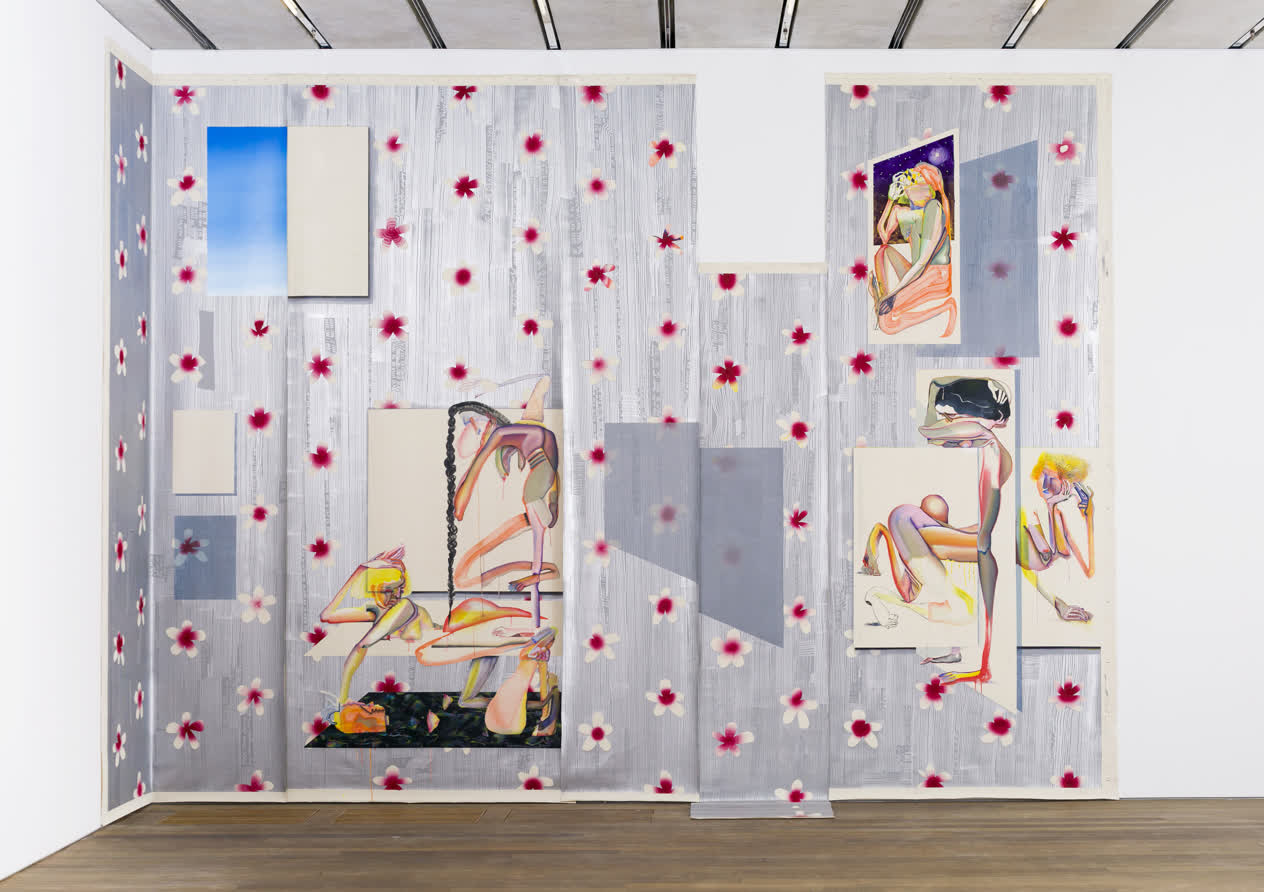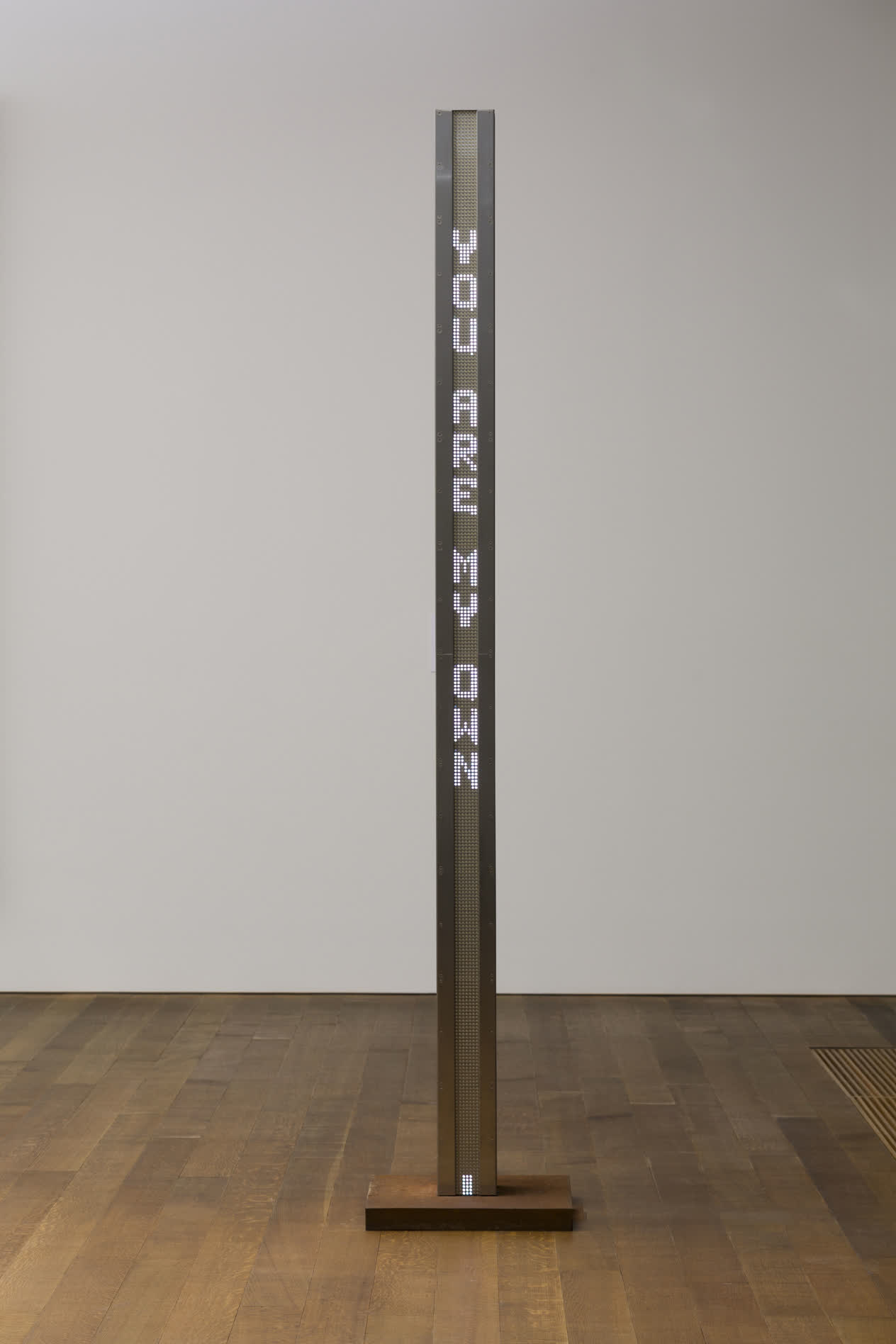Henry Taylor Everyone’s Momma 2013
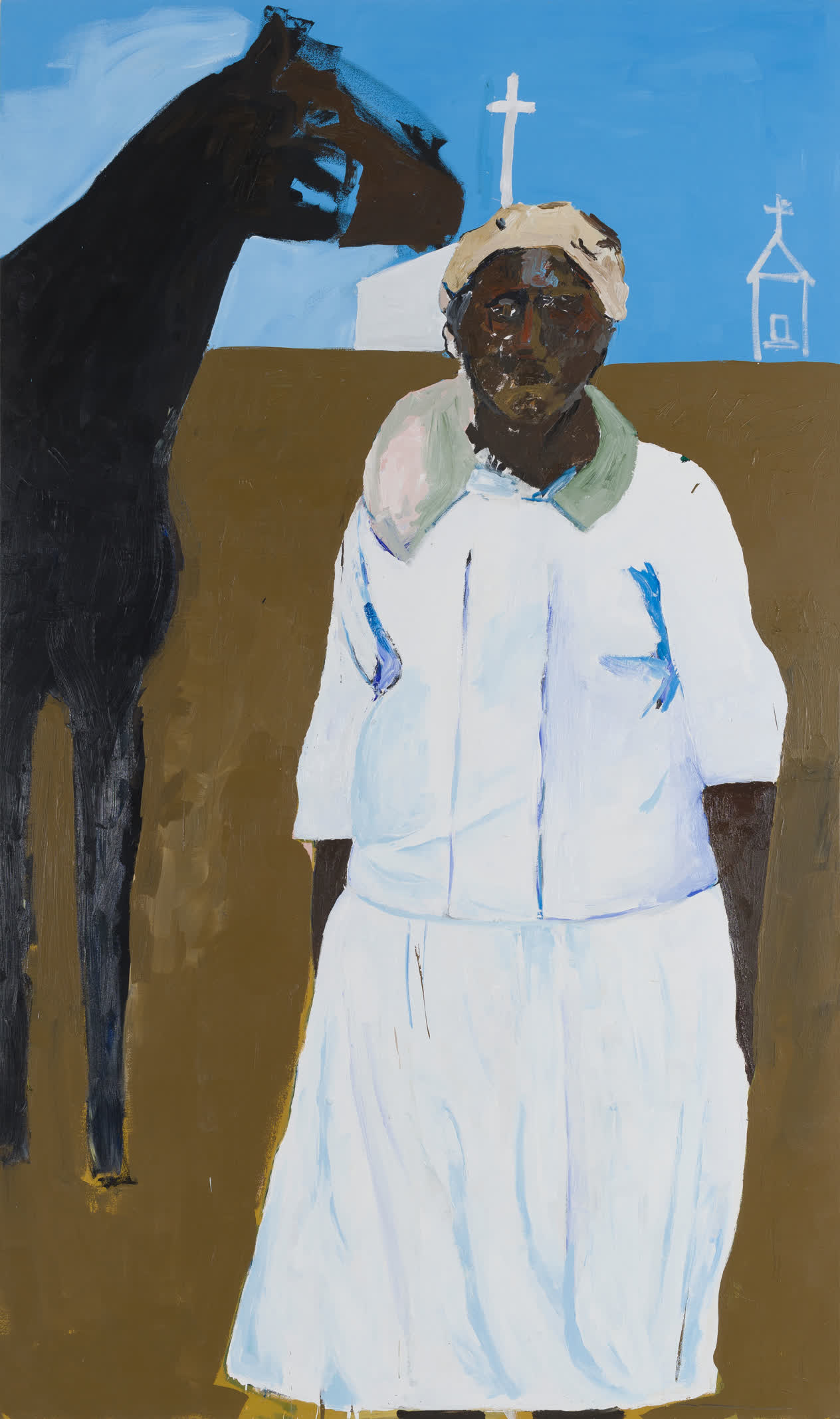
© Henry Taylor. Courtesy of Blum & Poe and Hauser & Wirth

Inspired by Works Progress Administration photographs of poor black farmers during the Great Depression, Everyone’s Momma brings to the forefront important and often forgotten people in Black communities across the United States in the 1930s and 1940s. In this hybrid of portraiture and history painting, Henry Taylor uses symbolism to speak to African American history and the complexity of the Black experience in the United States. A woman of color wearing a white dress and headscarf—implying purity and virtue—stands next to a black horse, which is considered a symbol of famine and hunger in the Bible. The woman’s intentionally anonymous face is formed by the artist’s loose and thick brushstrokes. While looking to the past to elevate Black farmers who worked the land, Taylor also exalts Black women as strong community pillars who, essentially, became “everyone’s momma.”
Identification
Title
Everyone’s Momma
Production Date
2013
Object Number
2017.197
Credit Line
Collection Pérez Art Museum Miami, museum purchase with funds provided by PAMM’s Collectors Council
Copyright
© Henry Taylor. Courtesy of Blum & Poe and Hauser & Wirth
https://www.pamm.org/en/artwork/2017.197
Copy artwork link
Physical Qualities
Medium
Acrylic on canvas
Dimensions
126 x 75 inches
Visual Description
Everyone’s Momma by artist Henry Taylor is an acrylic painting on canvas made in 2013. It measures roughly fourteen feet tall by ten feet wide and is hung in portrait orientation, meaning its shortest side runs parallel to the floor. This painting is both a figurative and history painting. History painting is a style of art that depicts important stories in history, literature, religion, and mythology. Figure painting is a style of painting that feature images of human beings.
Everyone’s Momma is a monumental painting, meaning that it is scaled much larger than the height of the average human being. The painting itself is fourteen feet tall, meaning that it is just shy of three times the average American’s height. This scale forces a person to either look up to see it, or to step back to a far distance; usually both. This grand scale reorients the viewer in a way that subconsciously projects importance and significance onto the figure in the painting. This art strategy is often used in the creation of monuments, minimally, by placing them on pedestals that can often be taller themselves than the average human, without even thinking of the sculpture that stands upon it. Everyone’s Momma is divided into two major sections. The largest section is the ochre-brown field that covers the bottom two thirds of the painting. It is presented as land. The second section of the painting is the top third of the painting is a sky-blue field that is presented as the sky. Large brush strokes can be seen across this top tier of the painting.
Along the horizon line of the painting, in the upper right, is a simple line drawing of a church. It is made up of simple white outlined square, with a rectangle at its center representing a door. It is topped by a white outlined triangle roof. Atop this roof is a white drawing of a cross, that allows the drawing to be read as a church, almost at its most rudimentary, symbolic level.
There is another white church along the middle spine of the painting, sitting exactly on the horizon that divides the brown and blue fields. The white church is fully painted, rather than a series of white lines like the smaller church to the right. The front wall is fully painted white with a few gray brush strokes near the bottom of the wall. The cross on the roof is thicker and taller than on the other church. From the center to the left of the painting, dividing the large brown field, and much of the sky-blue section of the top tier of the painting is a large black horse. The body of the horse is cut off by the left edge of the painting. The brush strokes are rough, in an expressionist manner. Following the edge of the horse that divides the black body of the horse and the brown field, sits a greyish fleck of paint that divides the neck of the horse and the body. The neck of the horse leans upwards into the blue segment of the top tier. The whiteness imbedded in the field of blue causes the black head of the horse to appear darker and ‘pop’ compared to the surrounding blue sky. The head of the horse sits over the church, the bottom of its chin barely touching the white building’s slanted roof.
Taking up the majority of the painting is the figure of a standing Black woman. She is wearing all white and is by far the largest figure in the painting, placing the two churches and horse behind her in the painting’s composition. Her long white skirt reaches the bottom of the canvas, leaving less than an inch of her two legs visible against the brown background. Her arms are at her sides, but her hands are behind her ample white skirt. Taylor used streaks of light blue and lavender on the white fabric to give it some shape and contour. Her blouse is also white and has a large, light green collar that wraps around her neck. The sleeves reach past her elbows, and two parallel lines along the front hide any buttons or clasps. Her face is barely legible due to the artist’s painting style, but thick grush strokes highlight a nose, eyes, lips, as well as cheekbones and a chin. The woman wears a beige head covering and looks past the viewer, as if caught in a candid pose.








